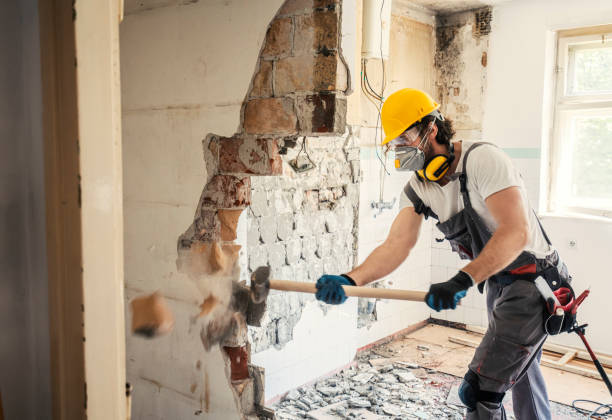Introduction:
Sheetrock repair is an essential skill for Laguna Beach homeowners and DIY enthusiasts alike. Whether you’re dealing with cracks, holes, or water damage, knowing how to properly repair sheetrock can save you time and money. In this comprehensive guide, we will walk you through the process of sheetrock repair, providing informative insights, tips, and techniques to help you restore your walls to their former glory.
I. Understanding Sheetrock: An Overview
To start our guide, let’s explore what sheetrock is and why it’s commonly used in construction projects. We’ll discuss its composition, benefits, and the importance of maintaining its integrity. By understanding the basics, you’ll gain valuable insights into why sheetrock repair is necessary and how it can improve the appearance and functionality of your walls.
II. Common Sheetrock Issues and Causes
In this section, we will delve into the most common sheetrock problems homeowners face and their underlying causes. From small cracks and dents to larger holes and water damage, we’ll provide detailed explanations and examples. Understanding the causes will enable you to address the root issues effectively, preventing further damage and ensuring a successful repair.
III. Tools and Materials for Sheetrockn Repair
Having the right tools and materials is crucial for achieving professional-looking sheetrock repairs. In this section, we will provide a comprehensive list of essential tools and materials needed for the job. From basic tools like a utility knife and sandpaper to specialized items such as joint compound and drywall tape, we’ll guide you through the selection process, ensuring you have everything you need to complete your repairs.
IV. Step-by-Step Sheetrock Repair Process
Now it’s time to dive into the step-by-step process of sheetrock repair. We will guide you through each stage, starting with preparation and ending with finishing touches. From assessing the damage and making necessary adjustments to cutting, patching, and sanding, we’ll provide clear instructions, tips, and techniques to help you achieve seamless repairs. Emphasizing an active voice, we’ll ensure the instructions are concise, informative, and easy to follow.
V. Dealing with Specific Sheetrock Problems
In this section, we’ll address specific sheetrock problems and provide targeted solutions. We’ll cover techniques for repairing cracks, filling holes, and addressing water damage. By providing detailed explanations and alternative methods, you’ll gain the knowledge and confidence to tackle a wide range of sheetrock issues.
VI. Common Mistakes to Avoid
Even with the best intentions, mistakes can happen during sheetrock repair. In this section, we’ll highlight common mistakes homeowners make and provide guidance on how to avoid them. From improper sanding techniques to insufficient drying time, we’ll shed light on potential pitfalls and offer valuable tips to ensure a successful outcome.
VII. Safety Precautions and Protective Measures
Safety should always be a priority when working with sheetrock repair. We’ll discuss essential safety precautions, such as wearing protective gear, using proper ventilation, and handling tools and materials responsibly. By following these safety guidelines, you can protect yourself and create a secure working environment.
VIII. Frequently Asked Questions (FAQs)
Q1: How long does it take for sheetrock repairs to dry?
Proper drying time is crucial for successful sheetrock repairs. While it depends on various factors such as temperature, humidity, and the type of joint compound used, a general rule of thumb is to allow 24 to 48 hours for the repairs to dry completely. Keep in mind that thicker repairs may require more time. Patience is key to achieving optimal results.
Q2: Can I paint over repaired sheetrock?
Yes, you can paint over repaired sheetrock once it has dried and cured properly. Before painting, ensure the repairs are smooth and even. Prime the repaired areas to create a consistent surface, and then proceed with your desired paint color. Remember to follow proper painting techniques for a professional finish.
Q3: Is it possible to repair large holes in sheetrock without replacing the entire sheet?
Yes, it is possible to repair large holes in sheetrock without replacing the entire sheet. The key is to create a solid backing for the repair, such as using a piece of wood or drywall as a support. Then, follow the standard patching process, gradually building up the layers of joint compound until the repair is flush with the surrounding wall. With proper techniques, the repaired area will be indistinguishable from the rest of the wall.
Q4: Do I need professional help for sheetrock repairs, or can I do it myself?
Many sheetrock repairs can be successfully done as DIY projects. With the right tools, materials, and knowledge, you can achieve excellent results. However, for complex or extensive repairs, it is advisable to seek professional help. They have the expertise and experience to handle challenging situations and ensure the best outcome.
Conclusion: Wrapping Up Your Sheetrock Repair Journey
In this comprehensive guide, we have explored the world of sheetrock repair, equipping you with the knowledge and confidence to tackle various issues. By following the step-by-step process, avoiding common mistakes, and prioritizing safety, you can restore your walls to their former glory. Remember, practice makes perfect, so don’t be discouraged if your first repair isn’t flawless. With each project, you’ll gain valuable experience and refine your skills, ensuring future repairs are seamless and professional.


